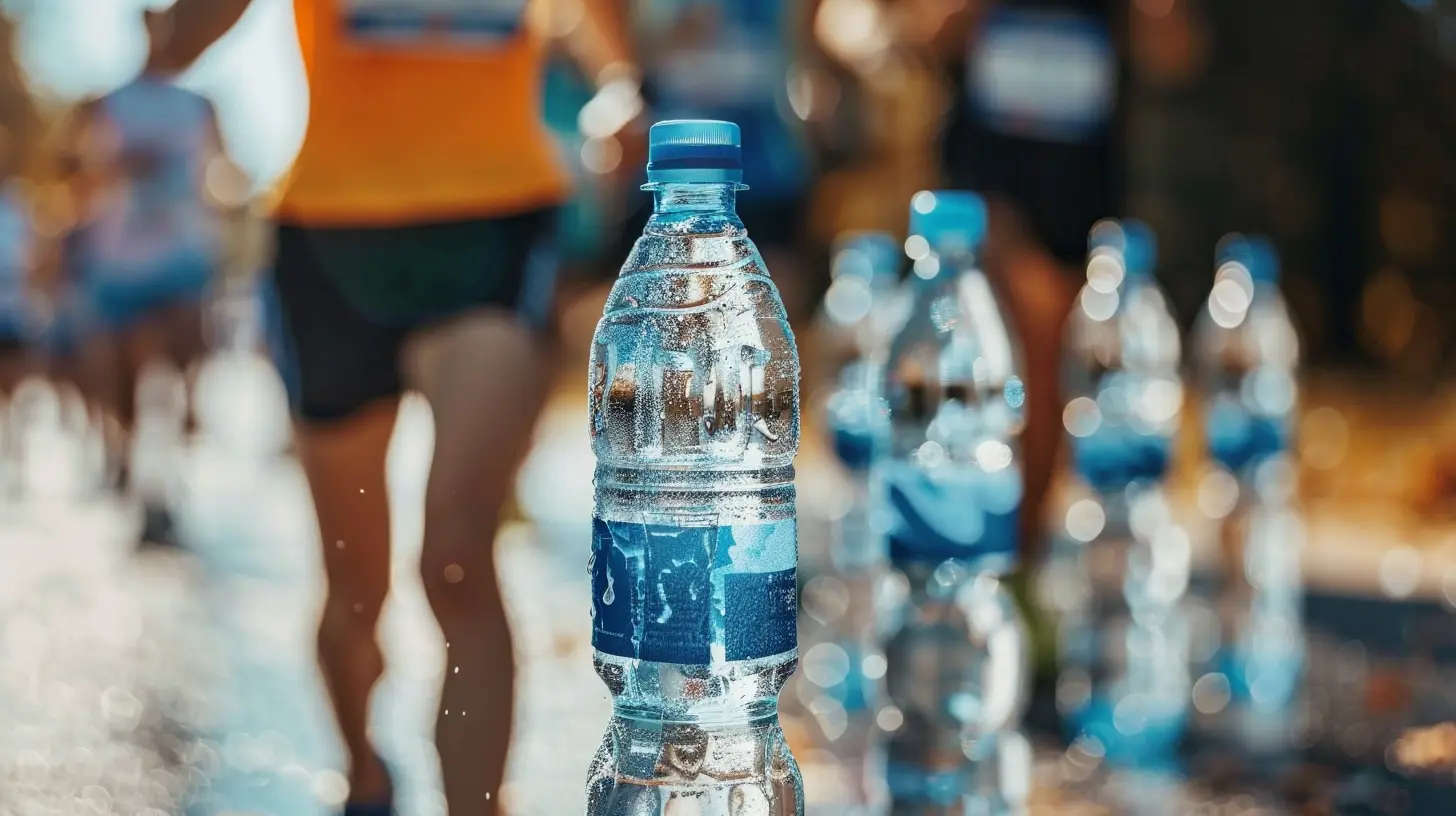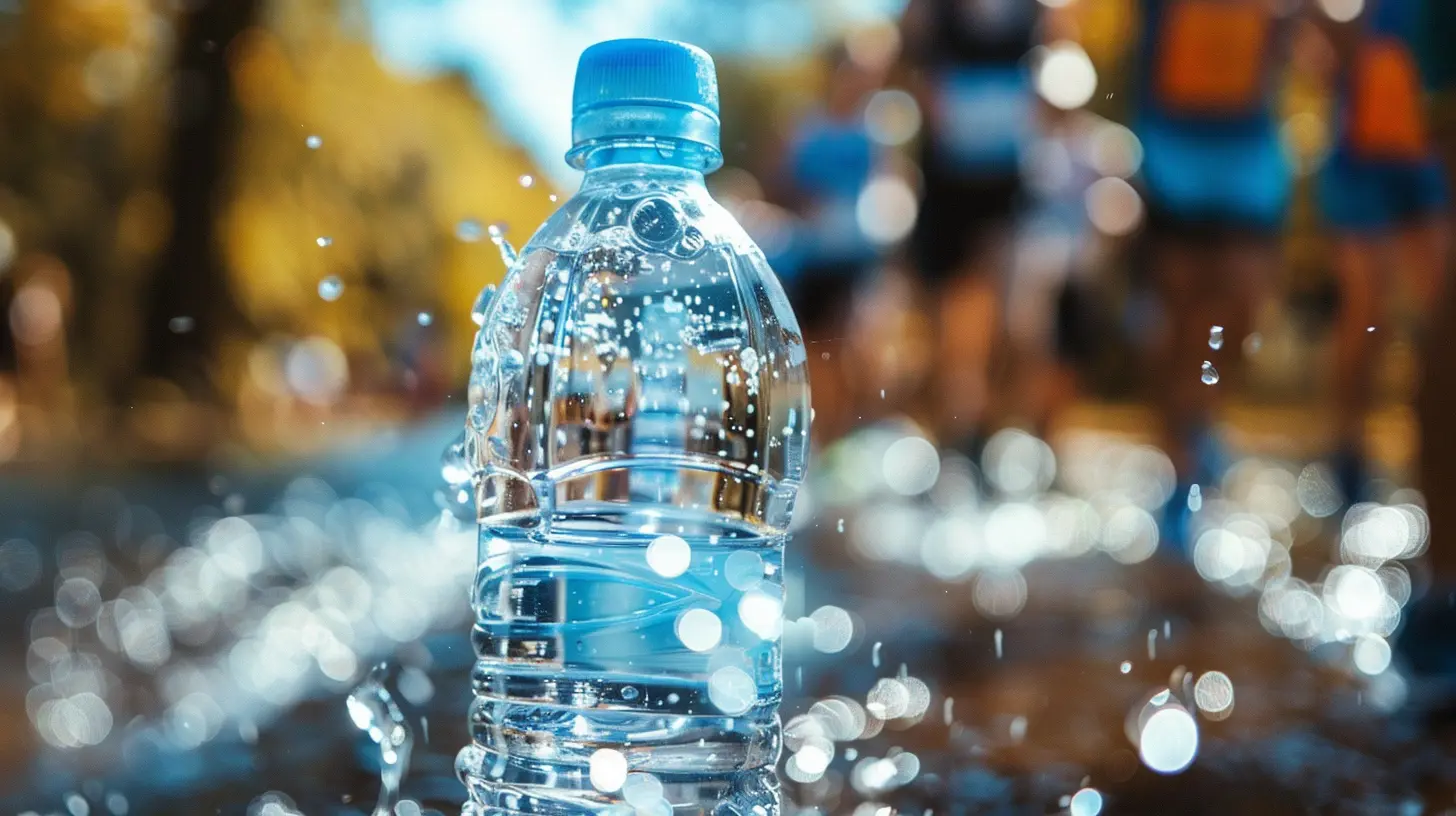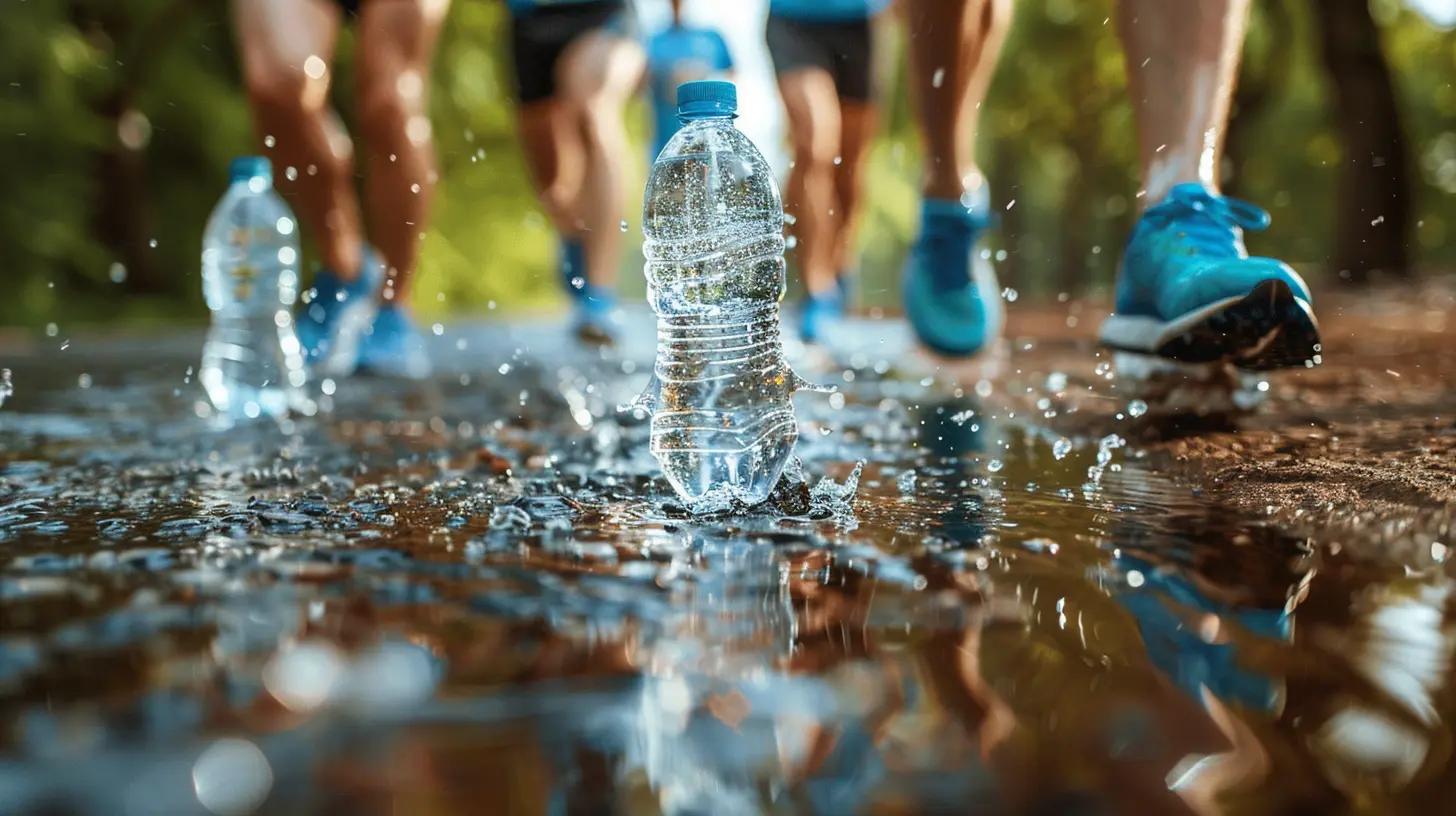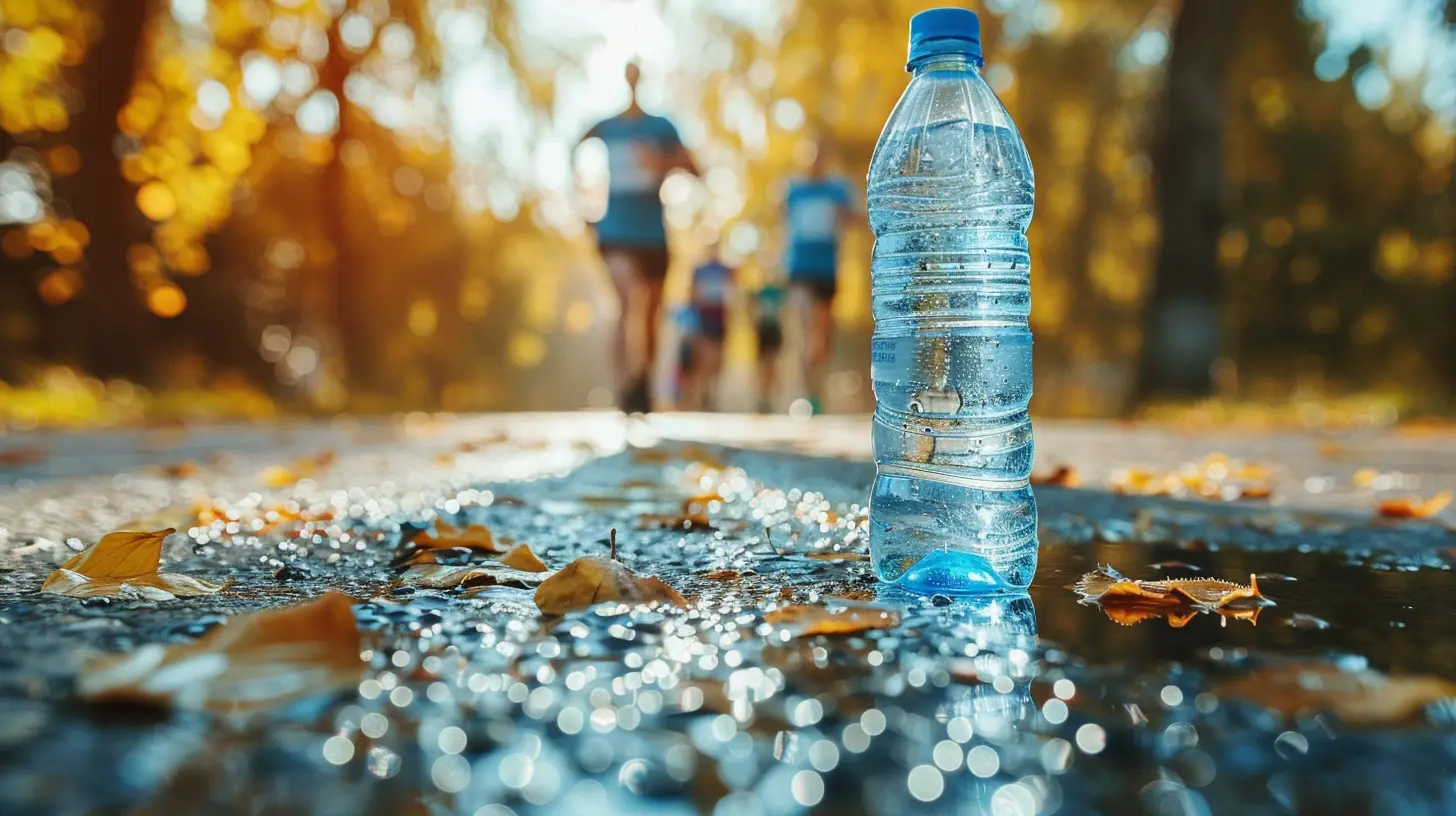How to Stay Hydrated Without Overdrinking During a Marathon
12 July 2025
Running a marathon is no small feat. You’ve trained for months, clocked in the miles, fine-tuned your nutrition, and now—here comes race day. But there’s one thing that can make or break your performance: hydration.
Sounds simple, right? Just drink water.
Well, not quite.
Hydrating smartly during a marathon is a fine balancing act. Drink too little, and you may hit the dreaded wall from dehydration. Drink too much, and you risk a serious and potentially life-threatening condition called hyponatremia (more on that later).
So how do you stay hydrated without going overboard?
Let’s break it all down.
Why Hydration is Critical During a Marathon
When you run, you sweat. A lot. And with every drop of sweat, you're not just losing water—you’re also losing vital electrolytes like sodium and potassium that help your muscles work effectively.Dehydration can slow you down, cause cramping, impair your focus, and make those last few miles a real slog. On the flip side, drinking excessive water can dilute the sodium levels in your blood, leading to hyponatremia, which is no joke. It can cause swelling, confusion, and even be fatal in extreme cases.
Hydration during a marathon isn’t about guzzling down water at every aid station—it’s about being strategic.
Understanding Your Body’s Needs
Let’s get personal for a second. Everyone’s hydration needs are different. It depends on variables like:- Your sweat rate
- The climate and temperature on race day
- Your pace and duration
- Your body weight and metabolic rate
The key? Know thyself.
How to Calculate Your Sweat Rate
This one's easier than you think. Try this simple test:1. Weigh yourself before going for a one-hour run (wear minimal clothing and be dry).
2. Don’t drink anything during the run.
3. After the run, towel off and weigh yourself again.
4. Subtract your post-run weight from the pre-run weight. That’s how much fluid you lost—in pounds.
Every pound lost equals roughly 16 ounces (500 ml) of fluid.
This gives you a solid ballpark of how much fluid you need per hour. Spoiler alert: it won’t be the same for everyone.
Hydration Strategy: Before, During, and After the Race
Pre-Race Hydration: Lay the Foundation
Think of pre-race hydration like charging your phone before a long day. You wouldn’t want to start at 30% battery, right?- Start hydrating 2–3 days before the marathon. This doesn’t mean slamming water all day, but sipping consistently.
- Keep your urine a pale yellow color. If it’s dark, you’re behind. If it’s crystal clear, you might be overdoing it.
- On race morning, sip 16–20 oz (about 500–600 ml) of water or a sports drink about 2–3 hours before the start.
This gives your body time to absorb the fluids and hit the bathroom before lining up.
During the Race: Sipping Strategically
Here’s where most runners either underdo or overdo it.Tip #1: Don’t Wait Until You’re Thirsty
By the time you feel thirsty, you're already a bit dehydrated. Small, steady sips starting from mile one can help you stay ahead of the game.
Tip #2: Use Aid Stations Wisely
Marathons typically have aid stations every 1.5 to 2 miles. You don’t need to stop at every single one unless it’s hot and you’re a heavy sweater. Listen to your body.
Tip #3: Alternate Water and Electrolytes
Your body doesn’t just need water. It needs sodium and other electrolytes to keep muscle function, nerve signals, and hydration in sync.
Aim for drinks that contain sodium, especially if you’re out there for more than 90 minutes. Use electrolyte tablets, sports drinks, or even salt packets if needed.
Tip #4: Know Your Hourly Needs
Most runners need about 16–28 oz (500–830 ml) of fluid per hour, depending on heat and effort. That’s roughly one small cup at each aid station.
Again, relying on your sweat test results can help fine-tune this.
What is Overhydration? (Yes, It’s A Thing)
Drinking too much water—especially without sodium—can dilute the blood sodium levels dangerously low. This condition is called hyponatremia, and it’s more common than you’d think in endurance races.Symptoms include:
- Nausea
- Headaches
- Confusion
- Swollen hands or feet
- Seizures (in extreme cases)
Scary, right?
Many runners drink “just in case,” or feel like they must take something at every aid station. Resist that urge. It’s better to sip based on a plan than panic-hydrate your way to the finish.
Common Hydration Myths That Could Ruin Your Race
Let’s throw a few myths out the window while we’re at it.Myth #1: “Drink as much water as you can before the race.”
Nope. Overloading before the gun even goes off can send you running to the porta-potty or dilute your sodium levels before you even start.Myth #2: “If I’m not sweating a lot, I don’t need to drink.”
Sweat rate varies among runners, but hydration needs also depend on humidity, effort, and duration—even if you don’t feel drenched.Myth #3: “Sports drinks are sugar bombs—I’ll skip them.”
Sure, some sports drinks have sugar, but sugar isn’t the villain here. Glucose actually helps absorb sodium and water more efficiently. But choose wisely—avoid drinks with too much sugar and no electrolytes.Practical Tools to Help You Stay on Track
Wearable Tech
Some running watches and apps now track estimated sweat rate and hydration loss. While not always 100% accurate, they can give you helpful reminders.Hydration Belts and Packs
Carrying your own fluid supply helps you avoid depending solely on aid stations. Use this if you’ve trained with it—you don’t want surprises on race day.Salt Tablets or Electrolyte Capsules
These are a game changer, especially for salty sweaters. Pop one every 45–60 minutes if your plan calls for it.Hot Weather or Cold Weather? Adjust Accordingly
In Hot Weather: Sweat loss is higher. You may need more fluid and more frequent sips. Monitor signs of heat stress like dizziness or goosebumps.In Cold Weather: You might not feel as thirsty, but you’re still sweating—even if you don’t feel it. Stick to a plan; don’t let the cool temps fool you.
Practice Hydration During Training (Seriously, Don’t Wing It)
Race day is not trial day.Use your long runs as hydration rehearsals. Try different drinks and timing strategies. That way, your stomach knows what to expect, and you can fine-tune what works and what doesn’t.
Think of it like a dress rehearsal—liquids and all.
Signs You’re Doing It Right
So how do you know you’re nailing hydration?- Your energy stays steady throughout the race
- Minimal cramping
- You don’t feel bloated or overly full
- You only need to hit the bathroom once or not at all mid-race
- You recover quicker post-race
Post-Race Hydration: Don’t Stop When You Cross the Finish Line
You made it. Medal in hand. But your hydration needs haven’t clocked out.- Within 30 minutes after finishing, sip on fluids with electrolytes.
- Continue rehydrating over the next few hours, especially if the weather was hot or your race was longer than 4 hours.
- A good rule of thumb: drink until your urine returns to a pale yellow color.
Final Thoughts: Run Smart, Sip Smarter
Marathon hydration doesn’t have to be complicated. It’s all about balance: not too much, not too little. Think of your body like a finely tuned machine—it needs just the right amount of oil to keep running smoothly.Train your gut, track your sweat loss, and test your hydration strategy on long runs. That way, when race day comes, you’re sipping with confidence—not guessing.
So the next time you hit the start line, you’ll know exactly how to hydrate like a pro—without overdoing it.
Your legs will thank you at mile 22.
all images in this post were generated using AI tools
Category:
MarathonAuthor:

Nelson Bryant
Discussion
rate this article
1 comments
Camden McFee
Running a marathon? Remember, hydration is key! But don’t turn into a human water balloon! Sip like a classy runner, not a thirsty camel. Your goal is to finish the race, not make friends with every water station!
July 26, 2025 at 4:58 AM

Nelson Bryant
Great advice! Balance is crucial—hydrate wisely to keep your performance on point!


